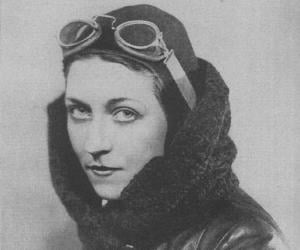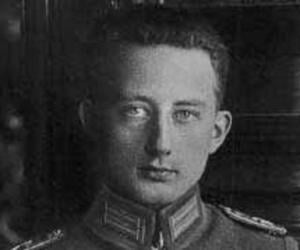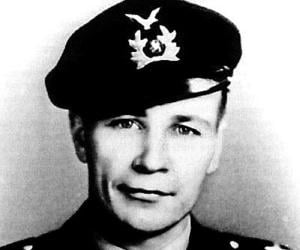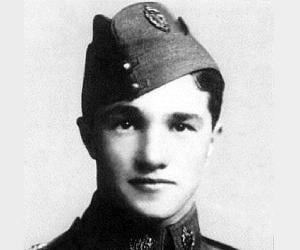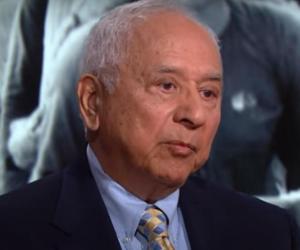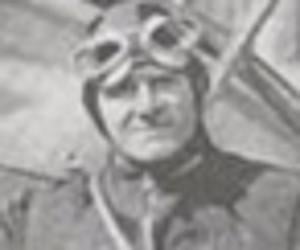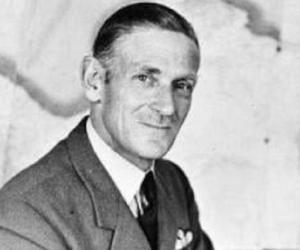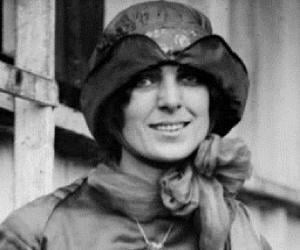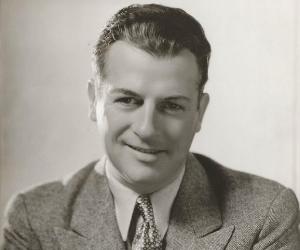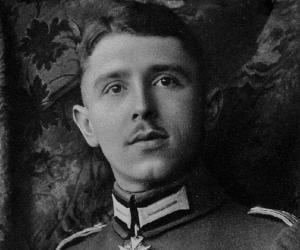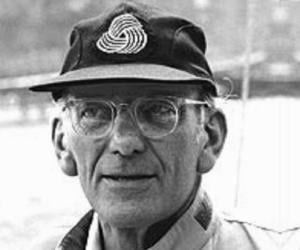Quick Facts
British Celebrities Born In July
Also Known As: Amy
Died At Age: 37
Family:
Spouse/Ex-: Jim Mollison (m. 1932–1938)
father: John William Johnso
mother: Amy Hodge Johnson
siblings: Betty Johnson, Irene Johnson, Molly Johnson Jones
Born Country: England
Pilots Aviators
Died on: January 5, 1941
place of death: Thames Estuary, United Kingdom
Cause of Death: Plane Crash
More Facts
education: The University of Sheffield
awards: Segrave Trophy (1932)
Childhood & Early Life
Amy Johnson was the eldest of the four daughters of Amy Hodge and John William Johnson. She was born on 1 July 1903, at 154 St George’s Road in Hull, East Riding of Yorkshire.
She received her early education from the Boulevard Municipal Secondary School (which would later be known as the Kingston High School). Then she went to the University of Sheffield, where she pursued a Bachelor of Arts degree in economics.
Career
After her graduation, Amy Johnson moved to London and worked as a secretary to a solicitor. It was during this period that she was introduced to flying as a hobby. By the winter of 1928-29, her hobby had become her biggest passion.
She received an aviator’s certificate on 28th January 1929, and a pilot’s “A” licence on 6th July 1929. In the same year, she also became the first British woman to obtain a ground engineer’s “C” licence.
In the early 1930s, Amy Johnson chose her objective – to fly solo to Australia and beat the record of Bert Hinkler, who had achieved this feat in 16 days. Her initial attempts to raise the required funds for this expedition failed, but her father, who was one of her strongest supporters, and Lord Wakefield came to her rescue and helped her in purchasing a de Havilland DH.60 Gipsy Moth G-AAAH, which she named “Jason.”
On 5th May 1930, Amy Johnson embarked on her solo expedition from Croydon. She landed in Darwin on 24th May. The monsoon in Burma (modern-day Myanmar) caused damage in Jason’s wing and resulted in a significant delay, which prevented her from beating the record. However, she was the first woman to fly alone from England to Australia.
This feat received worldwide recognition, and back home in UK, she received a hero’s welcome. Amy Johnson was awarded a CBE as well as the Harmon Trophy and was honored with the No.1 civil pilot’s license under Australia’s 1921 Air Navigation Regulations.
In 1931, she flew to Tokyo along with her mentor and mechanic, Jack Humphreys. They were able to set record times in both Moscow and Japan. In 1932, she broke her husband Jim Mollison’s solo record of flying from London to Cape Town, and in July 1933, the couple decided to give a shot at the record of flying non-stop from New York to Baghdad. Unfortunately, they crash-landed while trying to reach the starting point.
In 1934, the Mollisons flew non-stop in record time from Britain to India. They were in a G-ACSP, named “Black Magic,” a de Havilland DH.88 Comet, as part of a Britain to Australia MacRobertson Air Race. They retired in Allahabad due to an engine trouble issue.
Amy Johnson made her last record-breaking flight in May 1936. She reclaimed her Britain to South Africa record, and she did it in a G-ADZO, a Percival Gull Six. She was awarded the Gold Medal of the Royal Aero Club for this achievement.
She also had minor stints in journalism and fashion and even turned her attention towards business ventures. But with the start of World War II in 1939, she decided to join the Air Transport Auxiliary that used to ferry planes around the country for the Royal Air Force.
Family & Personal Life
In 1932, Amy Johnson married Scottish aviator, Jim Mollison. He had proposed to her while flying together for about eight hours after they first met.
Even though they were dubbed the “flying sweethearts” by the British press, they were also competitors and rivals in the aviation field. On top of this, Mollison, at times, was a heavy drinker. This caused a severe strain in their relationship, and the couple got divorced in the year 1938.
Death & Legacy
After the end of her commercial flying career, Amy Johnson joined the Air Transport Auxiliary. On 5th January 1941, during one of the routine flights, she went off course because of the adverse weather conditions. However, her aircraft ran out of fuel, and she had to bail out. The aircraft crashed into the Thames Estuary, and Amy fell into the water.
A convoy of wartime vessels passing by spotted Amy Johnson’s parachute coming down. Even though they saw her alive in the water, the conditions were too poor to attempt a rescue. There was a strong tide, and the snow was constantly falling to make matters worse.
Lt Cmdr Walter Fletcher, who was the captain of the HMS Haslemere, tried to get Amy Johnson out of the water, but unfortunately, she was lost under the ship. In 2016, a historian named Alec Gill claimed that the son of a crew member stated that Johnson was sucked into the blades of the ship’s propeller, but this theory has no proof to validate it.
Amy Johnson was the first person from the Air Transport Auxiliary to be killed in active service. Her body was never recovered, adding an element of mystery to her death.
Many years after her death, in 1974, Harry Ibbetson unveiled her statue in Kingston upon Hull. The University of Sheffield named the building that houses its department of automatic control and systems engineering after her.
Facts About Amy Johnson
Amy Johnson was the first female pilot to fly solo from England to Australia in 1930, a remarkable achievement at a time when aviation was predominantly male-dominated.
Johnson was known for her adventurous spirit and love of flying, often pushing the boundaries of what was thought possible for female pilots during her time.
In addition to her aviation accomplishments, she was also a skilled navigator and engineer, demonstrating a high level of expertise in multiple aspects of flying.
Johnson’s legacy continues to inspire women in aviation and beyond, serving as a role model for those who dream of breaking barriers and pursuing their passions fearlessly.
See more:


